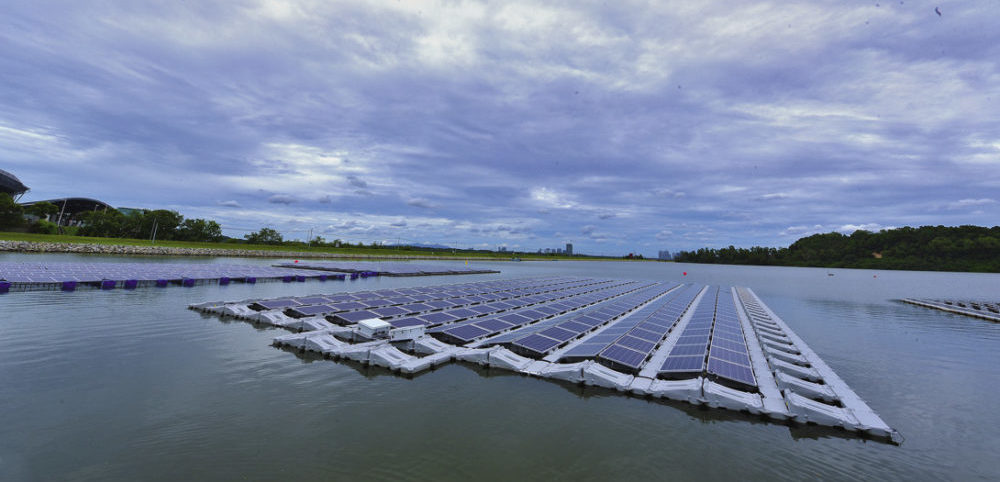The South Korean Ministry of Trade, Industry and Energy (MOTIE) announced in a press release that a 2.1 GW floating solar power plant will be built on a water surface close to the Saemangeum, an estuarine tidal flat on the coast of the Yellow Sea.
The ministry said construction on the project will start in the second half of next year, after all relevant licenses and permits, including environmental impact assessment, will be secured.
The Korean government stressed the project will be 14 times larger than the world’s largest floating project, which is a 150 MW plant under construction located in Huainan City, in China’s Panji District. “It will also be 1.6 times more than the combined capacity of the global floating solar facilities for all of last year,” the ministry also stated
The government estimates that approximately 4.6 trillion won ($3.9 billion) of private funds will be invested in the project. It added that around 5 million PV modules will be needed for the plant construction, without providing more technical or financial information.
The Saemangeum was dammed by South Korean government in 2010 and it is the world's longest man-made dyke.
More ambitious targets
The huge floating project is part of the renewed efforts of the South Korean government to increase the share of renewable in the country’s energy mix. The MOTIE is currently working on an Energy Basic Plan, which is targeting to raise this share to up to 35% by 2040. Between 155 GW and 235 GW of solar and wind could be deployed on rooftops, as well as unused or low-quality agricultural land, the MOTIE said in April. Earlier in March, it announced three different programs to prioritize high-efficiency renewables projects that use equipment with a low carbon footprint and adhere to stricter Korean industry standards.
On the top of this, a 3 GW ground-mounted solar project was announced for the Saemangeum area by the South Korean President Moon Jae in November.
Under its current energy strategy, South Korean aims at generating 20% of its power from renewables by 2030. The country is working on installing 30.8 GW of solar PV by that date, with 9% of that capacity to be developed in Saemangeum. It had reached an installed PV capacity of 7.86 GW at the end of 2018, according to the International Renewable Energy Agency (IRENA). Last year, a bit more than 2 GW of solar power was deployed in the country.
This content is protected by copyright and may not be reused. If you want to cooperate with us and would like to reuse some of our content, please contact: editors@pv-magazine.com.




3 comments
By submitting this form you agree to pv magazine using your data for the purposes of publishing your comment.
Your personal data will only be disclosed or otherwise transmitted to third parties for the purposes of spam filtering or if this is necessary for technical maintenance of the website. Any other transfer to third parties will not take place unless this is justified on the basis of applicable data protection regulations or if pv magazine is legally obliged to do so.
You may revoke this consent at any time with effect for the future, in which case your personal data will be deleted immediately. Otherwise, your data will be deleted if pv magazine has processed your request or the purpose of data storage is fulfilled.
Further information on data privacy can be found in our Data Protection Policy.